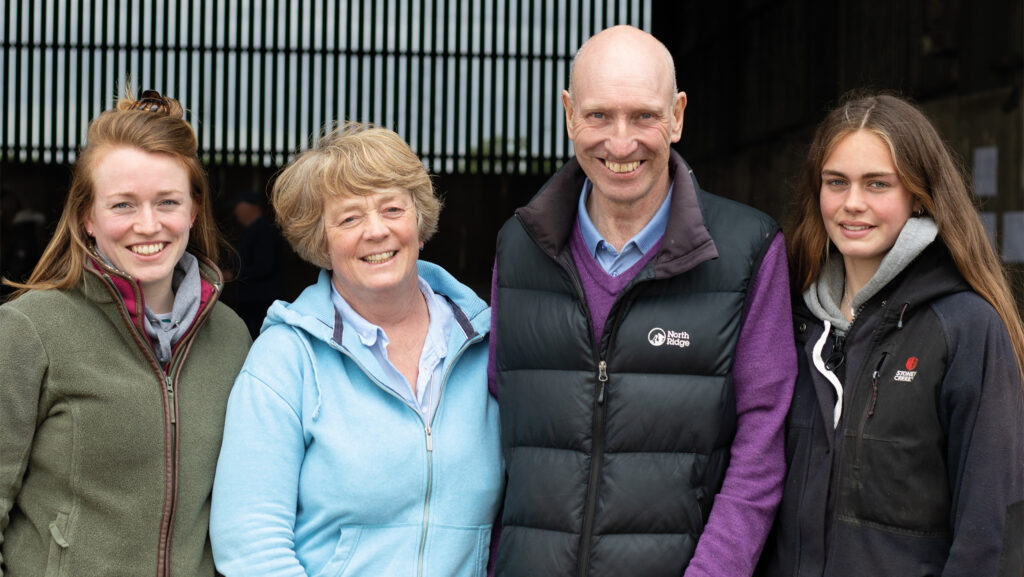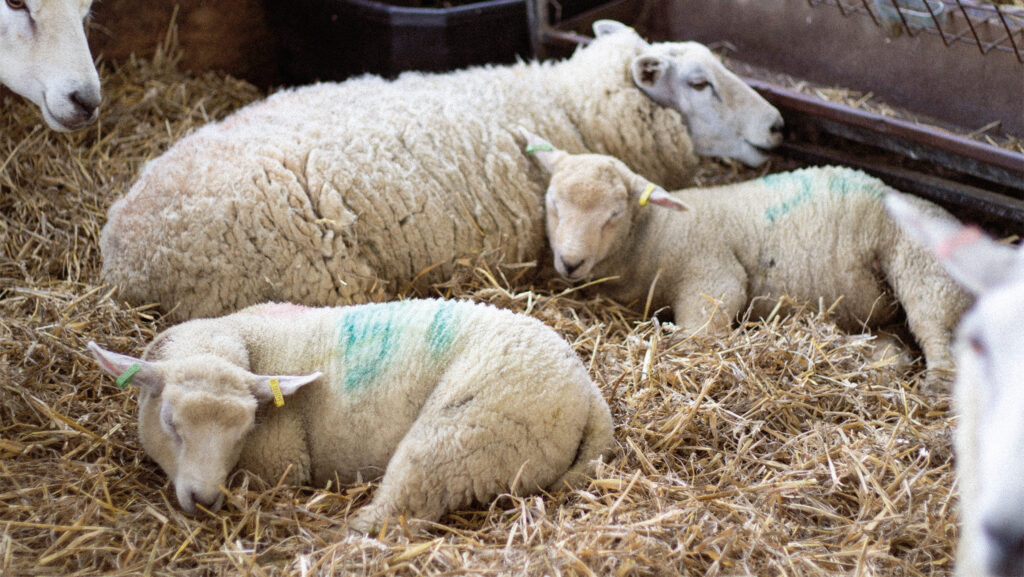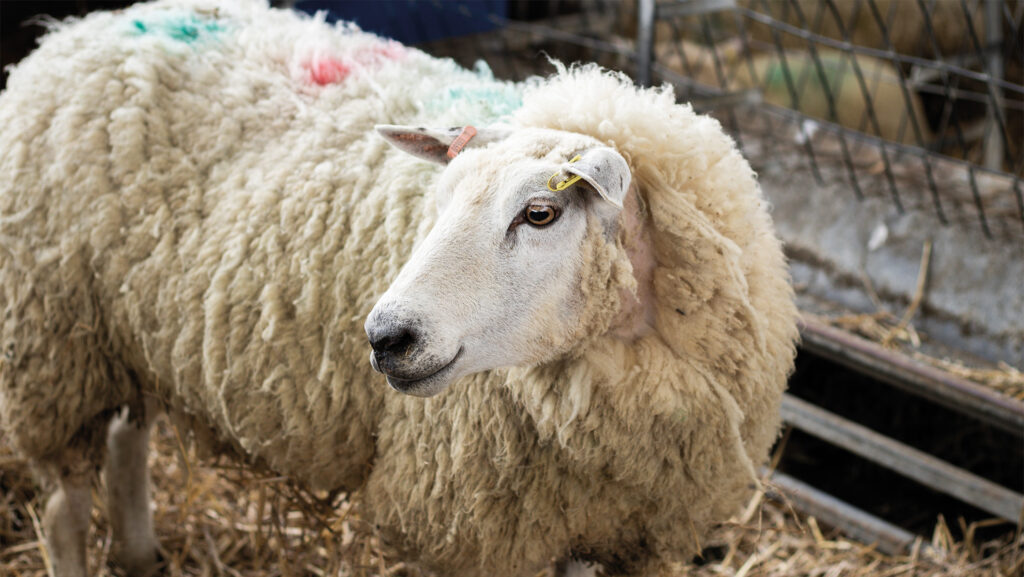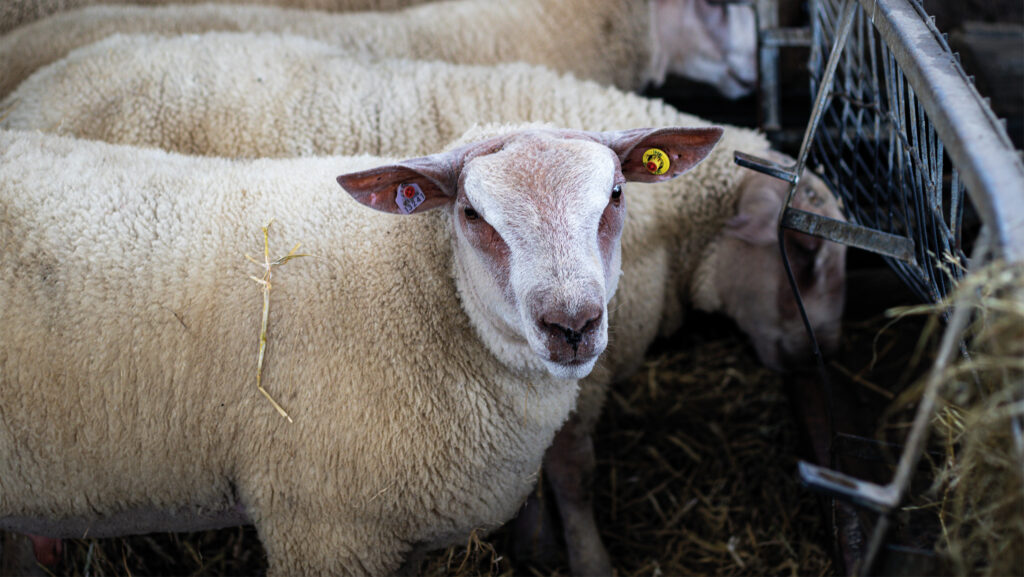How RamCompare gives pedigree flock commercial edge
Sheep industry stalwart and farmer Charles Sercombe believes performance recording holds the key to unlocking the efficiency of the UK’s flock.
“Agriculture is at a crossroads: whichever party is elected on 4 July, there is going to be change. Support will go, and we will have to be more efficient,” he warns.
The former NFU livestock board chairman and National Sheep Association (NSA) trustee says using flock data to identify superior genetics could help the industry reduce antibiotics and anthelmintics use, lower its carbon footprint and ultimately improve profitability.
See also: How a Cornish farm is increasing lamb value using EBVs
Farm facts: Sandlands Farm, Melton Mowbray, Leicestershire
• 200 pedigree Charollais, 300 Abermax ewes, 50 Texels, 40 Blue Texels, 400 crossbred maternal ewes.
• Pedigree Charollais flock lambs for one week in December and four weeks in March
• Crossbred flock lambs in March for four weeks
• Selling crossbred lambs to Pilgrim’s, Llanidloes
• Pedigree rams sold directly off farm and at pedigree sheep sales
• Farming 182ha, growing fodder beet, maize and winter wheat with the remainder permanent pasture
“Data and recording are going to be the future of farming. We are all going to have to monitor and manage what we do more effectively,” explains Charles.
This is a philosophy he lives by when it comes to managing his own flock of about 1,000 ewes, which he runs with his wife, Helen, at Sandlands Farm, near Melton Mowbray in Leicestershire.

Charles Sercombe with wife Helen and daughters Victoria (left) and Grace © Rhian Price
Performance recording
Charles’ pedigree Charollais Dalby flock was founded 38 years ago and has been performance-recorded for 34 years.
This year marks the third season he has taken part in RamCompare – the UK’s commercial progeny test for terminal sires, run by Signet.
Charollais was one of the first breeds to start performance recording through Signet and pioneered using ultrasound scanning with its sire reference scheme in the 1990s.
The breed has reduced days to slaughter by one week and improved scan weight and muscle depth over time.
Signet animal breeding manager Sam Boon explains: “There’s a strong correlation between scan weight and days to slaughter, so if you select for a high scan-weight ram, the progeny will finish faster.
“There is also a positive relationship between muscle depth and conformation.”
RamCompare is among the tools Charles has deployed in his quest to breed better marketable rams for his non-pedigree customers.
“I wanted to prove that our rams used in the pedigree flock are capable of siring good commercial lambs as well.
“Because 90% of my sheep are sold to commercial farmers, I have to produce commercial rams that are fit for purpose,” Charles says.
“[Progeny testing] is helping us by identifying the rams that sire valuable commercial progeny – lambs that are fast growing and have superior carcass traits.”
Since starting to record, the Dalby flock’s index has increased from an average of 40 to 250, and gigot and muscle depth have both improved, from -1 to +1 and 0.5 to 1.4, respectively.
The Sercombes have 200 pedigree Charollais and also run 400 maternal ewes, based on improved Lleyn genetics.
“We select for twins with plenty of milk and keep rams out of them, and [then] put the rams back across the flock to breed our own replacements,” explains Charles.
RamCompare project

A December lambing flock supplies pedigree breeders and a March lambing flock targets the commercial shearling market © Rhian Price
For RamCompare, 200 crossbred ewes were mated to six different rams – five Charollais, and one Texel ram, Clayhill Fernando, which was used as a linkage ram across other flocks participating in the project.
The linkage ram is used so that his genetic influence can be assessed under different environments.
“Last season, we chose four rams, and Signet chose the other two we used.
“I have used two high-performance rams, Foulrice Apache and Foulrice Ace, which are in the top 1% [for terminal sire index (TSI)], and then Tullyear Artemis, which is in the bottom 25% for TSI,” he says.
“Artemis was imported from Ireland with a low-linkage pedigree.”
Typically, low-linkage pedigree rams will have lower reliability and figures, he explains.
“I wanted to put him into RamCompare to see if he is still a low index after progeny testing.”
Each ram has also been used on 40 ewes within the purebred flock.

Crossbred ewe © Rhian Price
Lambing management and data recording
Half the pedigree flock now lambs over four weeks in March – a move made in the past three to four years to mirror a commercial production system and attract more commercial ram buyers.
December-born lambs are sold as ram lambs to mainly pedigree breeders, while the March-born lambs are sold as shearlings.
Lambs are tagged and ringed within 24 hours of birth. Later-lambing groups are turned out within 48 hours of lambing, and creep is introduced at six weeks.

Progeny testing, ultrasounds and CT scans are used to inform breeding decisions © Rhian Price
A wealth of data are recorded on the progeny, including birthweights and eight-week weights.
Lambs are ultrasound-scanned to ascertain their muscle depth and fat depth at 12 weeks of age when they weigh 30-40kg liveweight, says Charles.
When the lambs are slaughtered, their eartags are read, and the abattoir feeds back individual carcass performance to Signet.
Alongside ultrasound scanning, which costs £3.50 a head, eight to 10 of the best pedigree lambs will be CT-scanned.
“It gives us a higher accuracy for muscle depth and fat, but it costs £100 apiece, so I only do the elite animals.
“The one that has the best figures will be used within our own breeding programme or sold to other breeders,” he says.
CT scanning, although expensive, has put his flock at the forefront for genetic evaluation of carcass traits.
“CT scanning highlights those individual animals, but the proof of the pudding is in the eating, and it is how lambs perform in a commercial environment.
“The ultimate test is can a ram sire good, crossbred lambs that grow quickly and provide good meat in the right places for what the processor wants?”
For this reason, Charles says it is important to use all three tools: progeny testing, ultrasound scanning and CT scanning.
“Taking part in RamCompare has given me the confidence [my rams] will perform in a commercial environment,” he adds.
Next steps
He is now embracing genomics, having tested 50 sheep already.
“Hopefully, we will be able to identify a superior ram lamb through the genomic test, rather than wait until he has progeny on the ground.”
Senior signet breeding specialist Laura Eyles says sires used on RamCompare have also been genotyped, and this will be important in the development of genomic breeding values for terminal sires.
Charles’s daughter, AHDB’S animal genomics senior data adviser Victoria Ashmore, says the use of genomics enables the correction of pedigree errors, the detection of recessive diseases and faster progress to be made on low-heritability traits, such as lamb survival.
Sam says data is a powerful tool that can reveal a great deal.
He adds: “You’re never too late to start recording. There’s always somewhere to start.”
This report was written from a recent event hosted by AHDB and the Charollais Sheep Society at Sandlands Farm.
